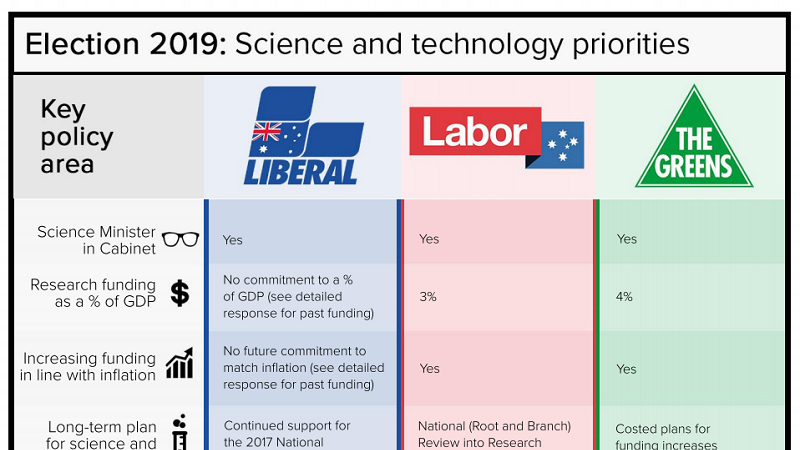The major parties have laid out their science and technology platform for Australian voters, with clear differences in their approach and vision for empowering the solutions sector.

Responding to a survey from peak body Science & Technology Australia (STA), the Coalition, the Labor Party and the Greens have all given clear answers to issues of significance to science, technology, engineering and mathematics (STEM).
All parties committed to having a Science Minister in Cabinet and to supporting diversity and inclusion in STEM. Major differences arose in the parties' approaches to investment in STEM research, infrastructure and education. To summarise the key differences:
- The Coalition has signalled a 'business-as-usual' approach if elected, with an ongoing commitment to their 2017 National Science Statement but no major new funding announcements for research or infrastructure. In education, it has committed to building STEM skills for the existing workforce through new VET funding.
- The Labor party has committed to working towards total national R&D funding of 3% of GDP by 2030 and a root and branch system-wide review, with a view to leverage business investment. It's committed to re-establishing the Education Investment Fund for university research infrastructure, removing caps on undergraduate university places and increasing VET investment.
- The Greens have laid out an ambitious approach to STEM, working towards total national R&D funding of 4% of GDP by 2030, a $2bn boost to infrastructure, and investing in improving teacher STEM skills and the VET system.
President of STA, Professor Emma Johnston AO, urged Australians to examine candidates' support and vision for science and technology when casting their vote.
"Science, technology, evidence and research will continue to play an increasingly important role in Australia's health, wellbeing and prosperity," Professor Johnston said.
"Responses to Science & Technology Australia's election survey indicate the major parties all understand the crucial role of science and technology in finding solutions and building wealth, but each party has outlined a very different vision for realising this potential."
She said that for most Australians support for science was a no-brainer, with a survey last year revealing 9 out of 10 Australians saw science as important and 8 out of 10 believed our government should spend more on it.
"Despite strong support from Australians, we are facing downward trends in government investment in science and technology, no visionary national plan, and increasing job insecurity in our sector," Professor Johnston said.
"To capitalise on the inspiring STEM talent and opportunity we have here in Australia, and to pass on the health, environmental and economic benefits to people across the world, this must change."
"We thank the parties for their responses and look forward to continuing to work with all sides of politics for a strong and strategic future for science and technology in Australia."






